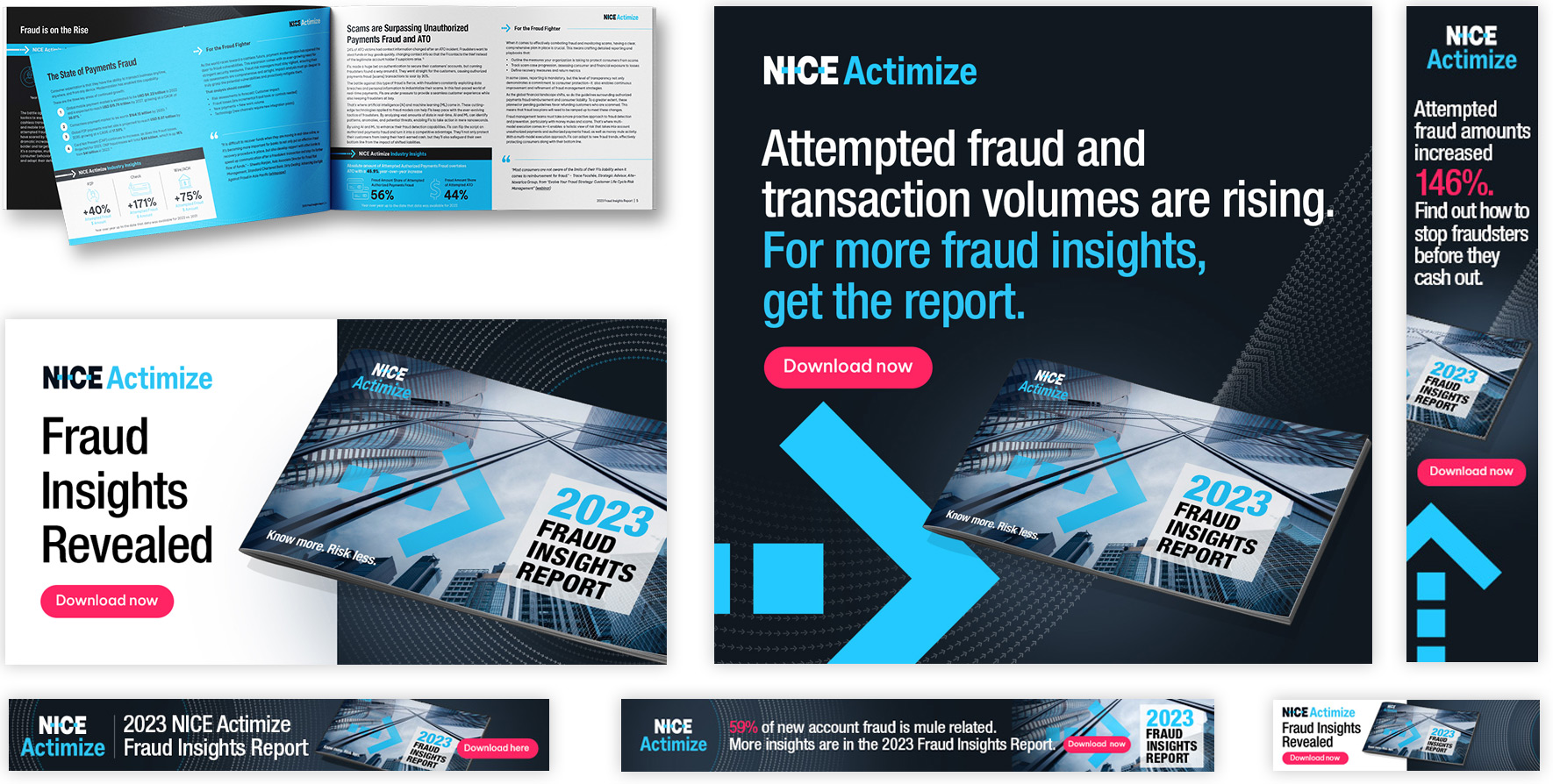
As we continue to face economic uncertainty, businesses must take proactive measures to survive during a recession. One key strategy for organizations is to implement a multichannel marketing approach. One that relies on high-quality creatives produced consistently and with due attention.
Multichannel marketing involves using a combination of various channels to reach customers, including email, social media, direct mail, and more. By diversifying their marketing efforts, organizations can increase their audience reach and can connect with customers through multiple touchpoints. This leads to better customer satisfaction and improved brand recognition with more leads.
However, simply using multiple channels is not enough. To truly stand out and build a resilient strategy that can withstand downtimes during a recession, CMOs and marketing professionals must also focus on creating high-quality creative, consistent with their brand image that resonates well with their target audience.
Here are some helpful tips for building a multichannel strategy when marketing during a recession that relies on clarity and consistent high-quality creative:
The first step in creating high-quality creative is always to understand your target audience. Organizations must identify who their ideal customer is, what their pain points are, and what motivates them to make a purchase. By understanding these key factors, organizations can create marketing messages and content that resonate with their audience and drive conversions.
Moreover, a thorough understanding of the audience will also help to eliminate possible costly errors when marketing strategies are not focused and do not bring results as the audience selected is too wide. Granularity is the key and using tools in each channel requires due attention to filter out irrelevant traffic, which will only bring the cost per lead up.
Consistency is key when it comes to building a strong brand message. Organizations must ensure that their messaging is consistent across all channels, from social media to email marketing to direct mail campaigns. This means using the same brand voice, messaging, and visual elements to create a cohesive brand message that resonates with customers.
There are so many examples of tone-deaf campaigns with totally inappropriate voice and messaging over the years. Avoiding these missteps when marketing during a recession is critical to ensure businesses don’t suffer from self-inflicted wounds.

Visuals are an important component of high-quality creativity. Organizations must use high-quality artwork, such as professional layouts, infographics, and videos, to capture the attention of their target audience or they risk being treated as generic and machine-made.
High-quality design can also help convey complex information in a simple and easy-to-understand way. Avoid templated and not custom-designed content marketing creative to ensure that the brand maintains the personal touch and is not becoming “just another” in the eyes of the consumer.

Every organization is using social media. It is a powerful tool to connect with customers and build brand awareness. By leveraging social media platforms such as LinkedIn and Twitter, organizations can engage with their audience, share thought leadership content, and promote their products and services.
However, maintaining consistency in campaign marketing or corporate marketing materials will allow you to extend branding impact beyond social media posts and develop more personalized connections with customers.
Variety and consistency along with predictability of content postings in various channels will ensure that posts are more visible and at the same time more engaging, leading to better brand awareness.
Including video content along with visuals that help explain the business processes and differentiators. While social media video often is not produced professionally, maintaining brand consistency, and using core brand elements is important to ensure that honest and direct communication doesn’t clash with the overall marketing system, leading to confused customers.
Personalization is becoming increasingly important in the world of marketing and especially when marketing during a recession or downturn. Businesses and organizations must personalize their messaging to make it relevant and engaging for their target audience.
This can involve using minimal customer data to personalize email campaigns or using targeted advertising on social media to reach specific segments of their audience. AI-based tools allow for improving audience selection and do not rely on specific user data which is no longer available for marketers to use in the US and especially in Europe due to GDPR.
During a recession, customers are looking for products and services that provide value. Business owners and marketers must emphasize their value proposition in their marketing messaging, highlighting how their products or services can help customers save money, increase efficiency, or improve their bottom line.
METAs “year of efficiency” transition from wasteful spending led to wide approval by investors and validated similar steps by other top tech companies. Building on efficiency in marketing communications means paying more attention to quality than to quantity. Mass production of half-baked content will only cause negative feedback in the most critical time when leads are crucial to a business lifeline.
Finally, organizations must continually test and optimize their recession marketing efforts to ensure that they are effective and perform well. This involves using all available data and analytics to track the performance of their marketing campaigns and make adjustments as needed on regular basis.
By testing and optimizing their marketing efforts, B2B organizations can ensure that they are building resiliency during a recession and positioning themselves for success in the long term. Adjustments in the creative materials are part of the process as no marketer can get it right on the first try each time.
Marketing during a recession requires a proactive approach, one that relies on more than just one user type, path, and vertical.
Organizations must implement a marketing strategy that uses high-quality creativity to connect with customers through multiple touchpoints and maintain consistent, clear communication.
Here is our final take: a recession is not the time to make drastic changes to the messaging and communication strategy. Optimizing the quality and consistency of all marketing materials across various channels is going to ensure that the audience is not confused and gives fewer reasons to leave. By understanding the target audience, creating a consistent brand message, and using high-quality visuals consistently, businesses can build enough resiliency during the downturn and position themselves for future success in the face of economic and geopolitical uncertainty.
Are you considering a reliable digital partner with expertise and resources to navigate your organization through recession marketing? Get in touch today. Get a consultation and free proposal for your project.